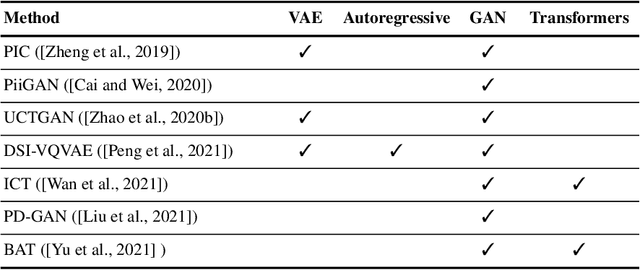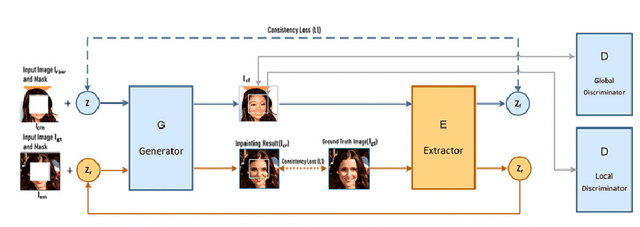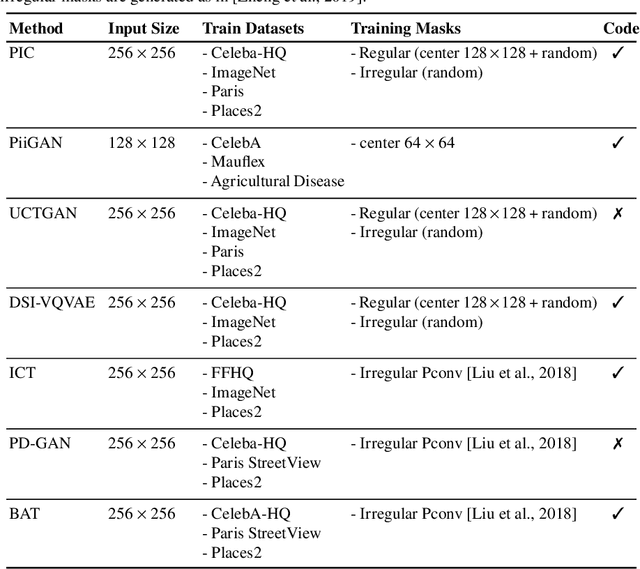Aurelie Bugeau
IRISA
An Analysis of Generative Methods for Multiple Image Inpainting
May 04, 2022



Abstract:Image inpainting refers to the restoration of an image with missing regions in a way that is not detectable by the observer. The inpainting regions can be of any size and shape. This is an ill-posed inverse problem that does not have a unique solution. In this work, we focus on learning-based image completion methods for multiple and diverse inpainting which goal is to provide a set of distinct solutions for a given damaged image. These methods capitalize on the probabilistic nature of certain generative models to sample various solutions that coherently restore the missing content. Along the chapter, we will analyze the underlying theory and analyze the recent proposals for multiple inpainting. To investigate the pros and cons of each method, we present quantitative and qualitative comparisons, on common datasets, regarding both the quality and the diversity of the set of inpainted solutions. Our analysis allows us to identify the most successful generative strategies in both inpainting quality and inpainting diversity. This task is closely related to the learning of an accurate probability distribution of images. Depending on the dataset in use, the challenges that entail the training of such a model will be discussed through the analysis.
Bandwidth selection for kernel estimation in mixed multi-dimensional spaces
Sep 14, 2007



Abstract:Kernel estimation techniques, such as mean shift, suffer from one major drawback: the kernel bandwidth selection. The bandwidth can be fixed for all the data set or can vary at each points. Automatic bandwidth selection becomes a real challenge in case of multidimensional heterogeneous features. This paper presents a solution to this problem. It is an extension of \cite{Comaniciu03a} which was based on the fundamental property of normal distributions regarding the bias of the normalized density gradient. The selection is done iteratively for each type of features, by looking for the stability of local bandwidth estimates across a predefined range of bandwidths. A pseudo balloon mean shift filtering and partitioning are introduced. The validity of the method is demonstrated in the context of color image segmentation based on a 5-dimensional space.
 Add to Chrome
Add to Chrome Add to Firefox
Add to Firefox Add to Edge
Add to Edge